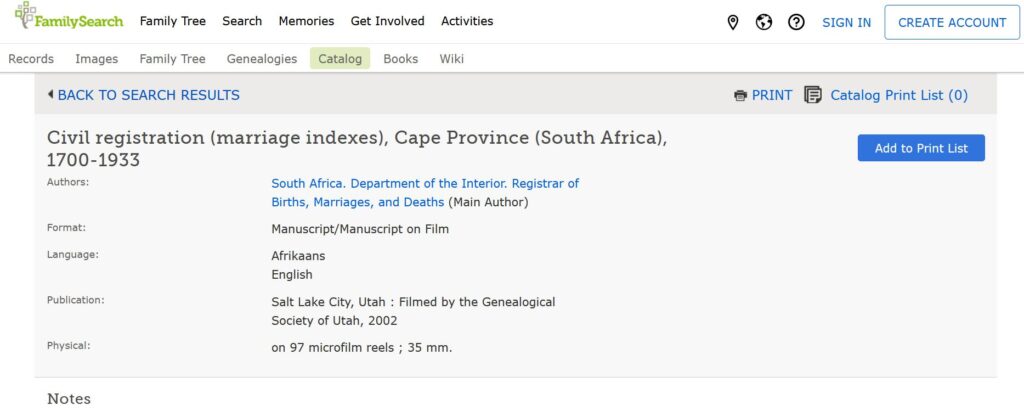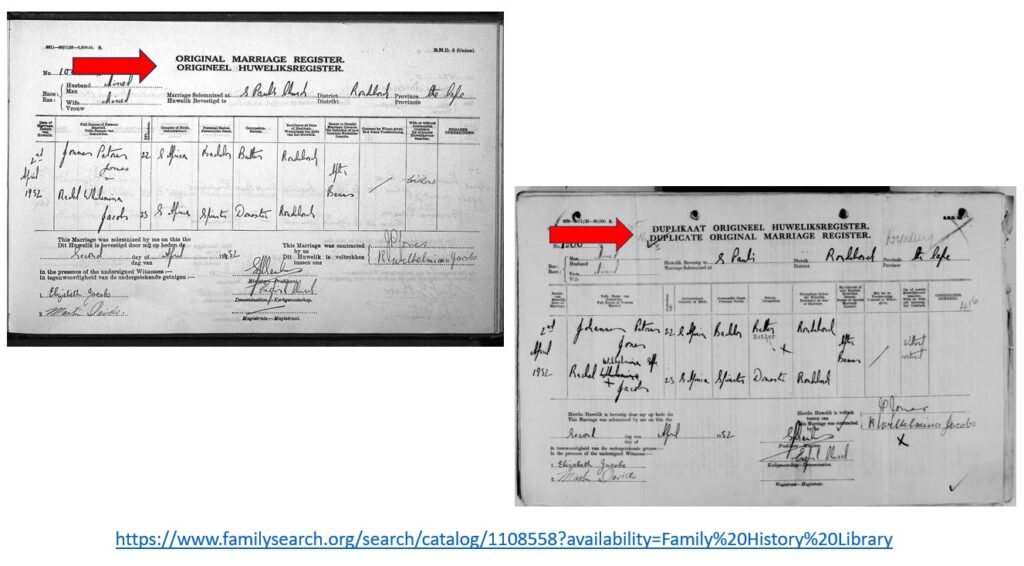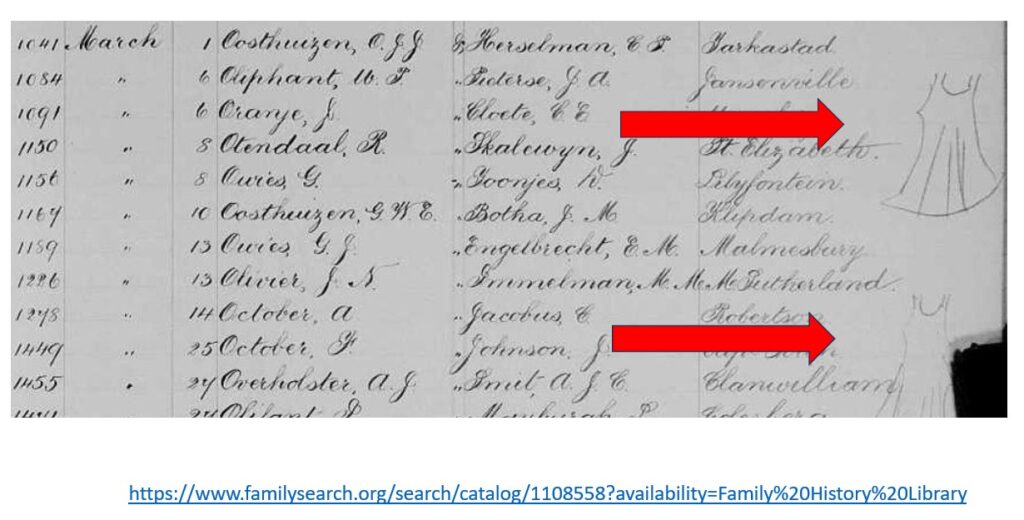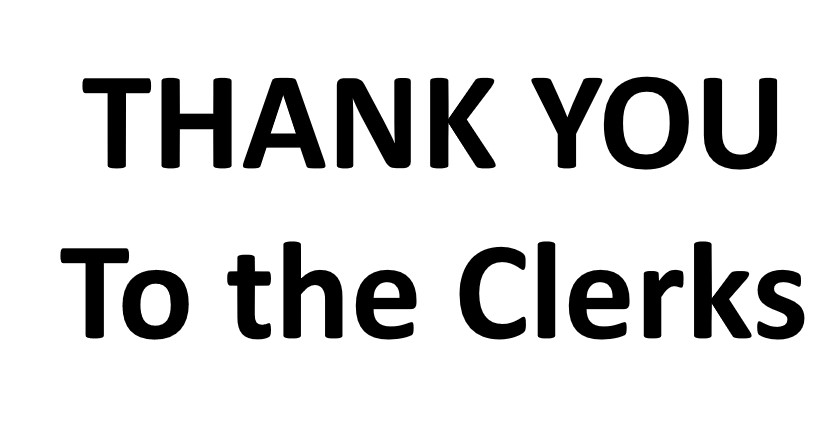
I want to tell you about a discovery I made when I was looking for a marriage on the Mormon site www.familysearch.org I was using the Cape Marriage Index. For those who don’t know it, it is an index of all the marriage that took place in the Cape Colony and later Cape Province.

Although these indexes seem to start very early on under the DEIC, from 1839 they seem more formal. From that point on, the minister who conducted marriage services had to forward to the Cape Colonial Government information on all the marriages they conducted. Basically, the bride, groom, two witnesses and the minister signed the Church’s Marriage register and then filled in and signed another register which had the strange name of ‘Duplicate Original’ and this page was sent to the government.

I presume, and by the look of the similarity in the hand writing, once a month some poor clerk would have to capture the information and write it up in the index book. As I was paging through the index for 1895, I started thinking about the poor clerk whose job it was to do this. I started trying to work out how he would go about it. That just shows my personality. I am always curious to know how anything works.

Imagine a pile of marriage certificates from all over the Cape Colony – from Port St Johns to Calvinia including the big cities of Port Elizabeth and Cape Town. First, they needed to be sorted in date order, then each given a unique number for that year. This was written on each certificate. Then they would be sorted in alphabetical order according to the first letter of the surname of groom, The clerk would enter the following into the index. The groom’s surname, his initials, the bride’s surname and initials, the date of the marriage, the unique certificate number and the district the marriage took place in. Then the clerk would have to flip over to the page of first letter of the bride’s name and enter the whole thing again, this time placing the bride’s name first then the groom’s. All the time being as accurate as possible.
Goodness this must have been so boring! I’m not being sexist when I say it is a known fact that women are must better at doing this sort of repetitive task than men but in the 1890s, were there any female civil service clerks? Looking at marriages of that time all the brides had no occupation given in the ‘Occupation’ column – their occupation was in home. In the USA in `1890s only 19% of office workers were female.

And then I thought, hang on! There were no ball point pens until after the second world war, so were these entries written with fountain pens? Although they had been invented in 1830s, the general use of fountain pens only started in 1880s and 1890s. So, it was most probably written with a dip pen. If we look at some pages we can see how bored those clerks were becoming by the untidiness of the entries.
As I said at the beginning, I was paging through the “O” pages of the index looking for an Opperman who married a Bosman in Kimberley some where between 1891 and 1897 when I turned over the page and saw this.

This fascinated me to such an extent that I had to stop my searching and think about what I saw. I had presumed that in the 1890s all clerks were male – most women didn’t work outside of the home. So, was this drawing done by a young male clerk, dreaming about what his future wife would wear on their honeymoon? Or was this a progressive female clerk describing to her female workmates her new bathing costume or tennis dress? The mind boggles!
Seeing this drawing made me re-think about these busy clerks (male or female) and realised just how like us they were one hundred and thirty-one years ago, getting bored and doodling in the open space on the page.
But more importantly I want to say a big THANK YOU to them all.

